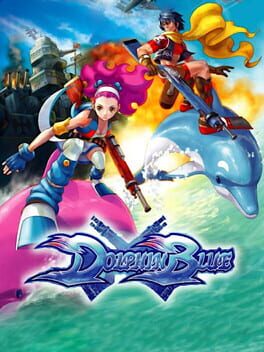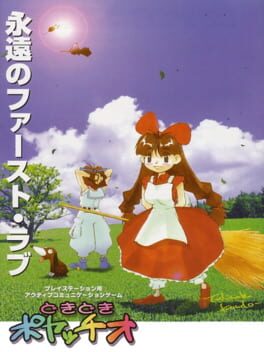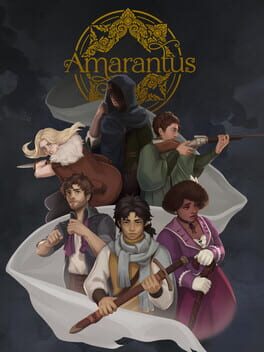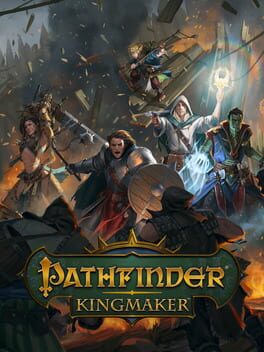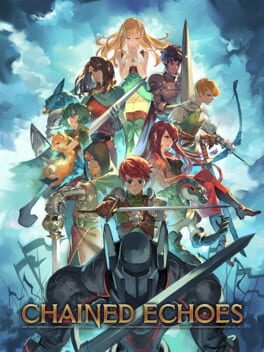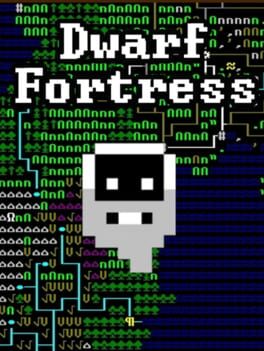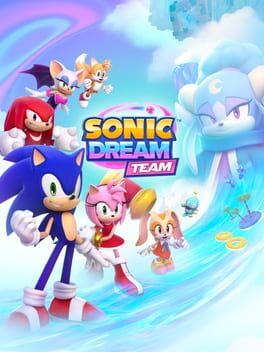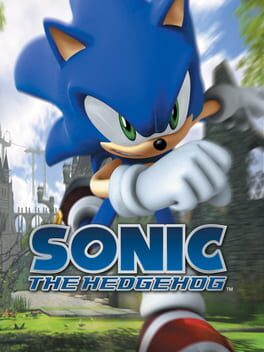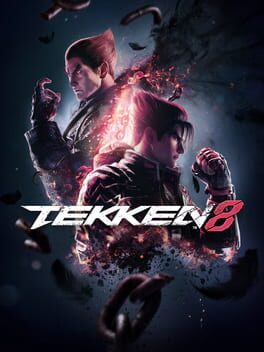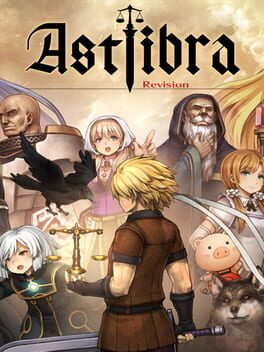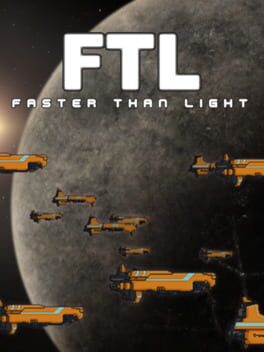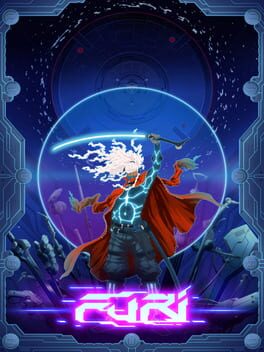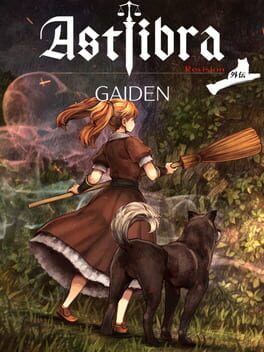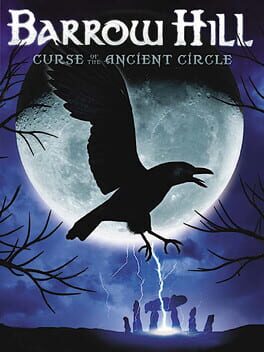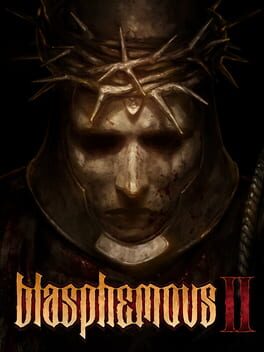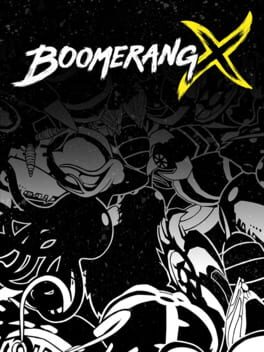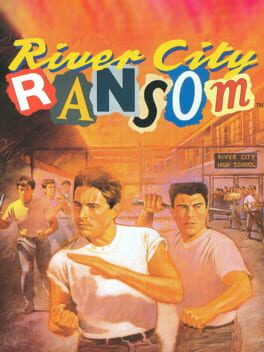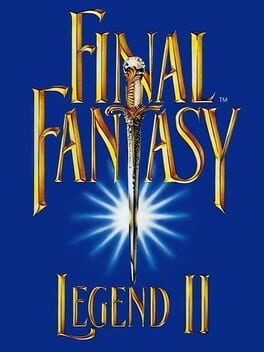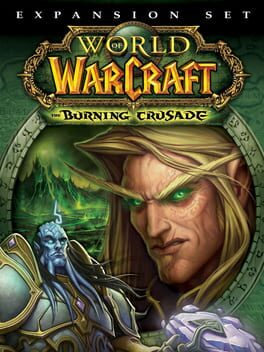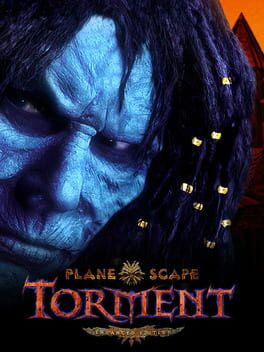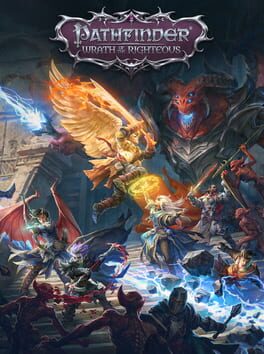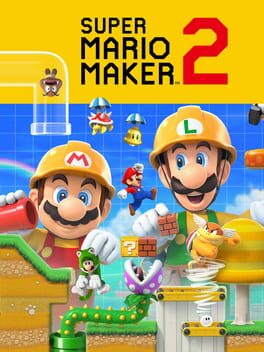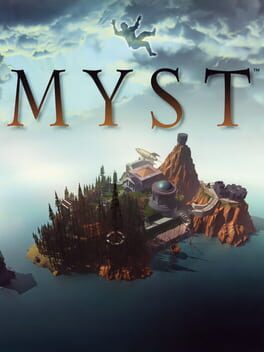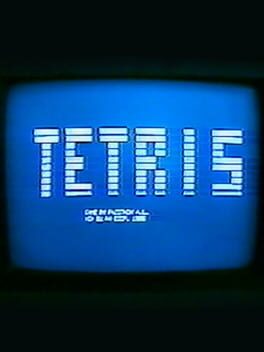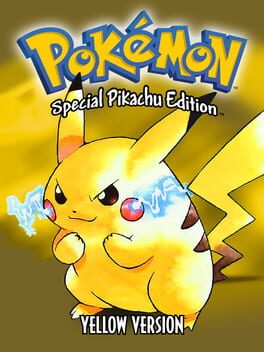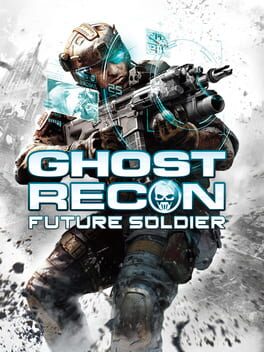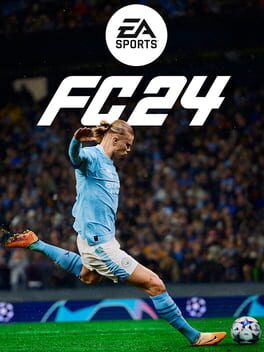rentheunclean
BACKER
662 reviews liked by rentheunclean
Dolphin Blue
2003
Ever play Metal slug and think to yourself "That was great and all but it really needs 100% more dolphin". Well boy do I have the game for you!
Evidently some former Metal Slug developers had the same thought when making this run and gun for Sammy Corporation in the early 2000s. Initially only released in arcades on Sammy's Atmoiswave arcade boards but later ported to Dreamcast by fans a few years ago to allow more people to experience it. Though adding in it's own unique ideas Dolphin Blue is such a close representation of Metal Slug you would think it was actually a spin off by SNK themselves. The military uniforms, guns and even the sound effects in places sound like they are just samples taken from it's influential forebear.
You get two characters to potentially play as, Erio an Arms Dealer and Anne a soldier. Regardless of who you play as in this adventure you will shoot through hordes of soldiers as they kidnap the Kingdom's Princess as the main premise. The most striking thing about Dolphin Blue are the visuals. It uses a mixture of chunky 3D backgrounds with 2D sprite characters and it's a gorgeous mix. Whilst the sprite work isn't the best I have seen of that era the colours and contrast with it's backgrounds make the game a real looker to play through. There is a lot going on at any one time with a lot of action and enemies on screen. A lot of the humour of the Metal Slug games is present such as scuba diver enemies suits inflating up when damaged and soldiers dangling precariously off of runaway trains in a very comic fashion. The levels themselves are pretty memorable with flooded mines, battleships, airships in a 1940's style diesel punk aesthetic.
There are only 5 levels but there only needs to be because this game is bloody hard. There are 3 types of gameplay in it's hour or so runtime though all three are run and gun type of foot, swimming or dolphin riding. Each have the same principle of shooting enemies, stabbing them if they get close whilst picking up some weapon power ups like Vulcans, missiles or firecracker grenades. These weapons have limited ammo and though frequent aren't always frequent enough and your base rifle can barely kill basic enemies but little else. Aside from that you also get a special attack that has a charge bar I was calling the RPG in my head (Rocket Porpoise Grenade) where your Dolphin flies forward doing a strong homing attack or on land you do a more powerful shot.
Now where the game gets hard is in both it's design and execution. On land your character feels stiff to control and shuffles rather than walks with no way to speed up. You can only shoot in 4 way directions despite some encounters clearly needing 8-way which I found extremely vexing often leaving me in no win unavoidable situations. The enemies will come in force from all angles leaving deaths often unavoidable and without the abilities to really deal with them except learning the game and the later levels are utterly brutal. The other modes are a lot more fluid for both underwater sections feeling more like a shoot 'em up and the dolphin Riding sequences which are a genuine blast to speed though. Even then though you can't fire backwards sometimes leaving you open to attack from the enemy encounters which was also a small annoyance. If it wasn't for the Dreamcast port I would never have beaten this as it has infinite continues and in places I just died endlessly.
I guess overall no matter how I look at it this is a good looking fun game that's a bit weird but there isn't a lot here that I don't think to myself Metal Slug already did and better. Certainly worth a playthrough for run and gun fans or people that like playing obscure retro games like me but it's not quite the hidden gem I was hoping.
+ Dolphins!
+ Great visual style and colours, striking looking game.
+ Dolphin riding!
- Too hard for me in the latter half.
- Stiff characters on land and no 8-way directional shooting. Really?
Evidently some former Metal Slug developers had the same thought when making this run and gun for Sammy Corporation in the early 2000s. Initially only released in arcades on Sammy's Atmoiswave arcade boards but later ported to Dreamcast by fans a few years ago to allow more people to experience it. Though adding in it's own unique ideas Dolphin Blue is such a close representation of Metal Slug you would think it was actually a spin off by SNK themselves. The military uniforms, guns and even the sound effects in places sound like they are just samples taken from it's influential forebear.
You get two characters to potentially play as, Erio an Arms Dealer and Anne a soldier. Regardless of who you play as in this adventure you will shoot through hordes of soldiers as they kidnap the Kingdom's Princess as the main premise. The most striking thing about Dolphin Blue are the visuals. It uses a mixture of chunky 3D backgrounds with 2D sprite characters and it's a gorgeous mix. Whilst the sprite work isn't the best I have seen of that era the colours and contrast with it's backgrounds make the game a real looker to play through. There is a lot going on at any one time with a lot of action and enemies on screen. A lot of the humour of the Metal Slug games is present such as scuba diver enemies suits inflating up when damaged and soldiers dangling precariously off of runaway trains in a very comic fashion. The levels themselves are pretty memorable with flooded mines, battleships, airships in a 1940's style diesel punk aesthetic.
There are only 5 levels but there only needs to be because this game is bloody hard. There are 3 types of gameplay in it's hour or so runtime though all three are run and gun type of foot, swimming or dolphin riding. Each have the same principle of shooting enemies, stabbing them if they get close whilst picking up some weapon power ups like Vulcans, missiles or firecracker grenades. These weapons have limited ammo and though frequent aren't always frequent enough and your base rifle can barely kill basic enemies but little else. Aside from that you also get a special attack that has a charge bar I was calling the RPG in my head (Rocket Porpoise Grenade) where your Dolphin flies forward doing a strong homing attack or on land you do a more powerful shot.
Now where the game gets hard is in both it's design and execution. On land your character feels stiff to control and shuffles rather than walks with no way to speed up. You can only shoot in 4 way directions despite some encounters clearly needing 8-way which I found extremely vexing often leaving me in no win unavoidable situations. The enemies will come in force from all angles leaving deaths often unavoidable and without the abilities to really deal with them except learning the game and the later levels are utterly brutal. The other modes are a lot more fluid for both underwater sections feeling more like a shoot 'em up and the dolphin Riding sequences which are a genuine blast to speed though. Even then though you can't fire backwards sometimes leaving you open to attack from the enemy encounters which was also a small annoyance. If it wasn't for the Dreamcast port I would never have beaten this as it has infinite continues and in places I just died endlessly.
I guess overall no matter how I look at it this is a good looking fun game that's a bit weird but there isn't a lot here that I don't think to myself Metal Slug already did and better. Certainly worth a playthrough for run and gun fans or people that like playing obscure retro games like me but it's not quite the hidden gem I was hoping.
+ Dolphins!
+ Great visual style and colours, striking looking game.
+ Dolphin riding!
- Too hard for me in the latter half.
- Stiff characters on land and no 8-way directional shooting. Really?
RoboWarrior
1987
On the fence with this one, but there's just enough wackiness with this game's expectations that I like it. It's got a bit of adventure, action, arcade kinda crammed together... weird rhythms of risking your candle resources in order to scrounge around a cave for other resources.
Wondering if you should spend your blow-up-all-blocks powerups to uncover other powerups.
The weird scramble to equip your life float, float on water and bomb what you think might be a wall to let you get out of the water safely.
The various level shapes and layouts, even if they start to texturally feel really similar (bomb, wait, get hit by impossible to dodge tiny bullet, bomb, wait, bomb, wait...). There's a kind of ambiguous risk-reward that's both mushy but kind of pleasing to try and brute force through.
The 'lore' suggested by the flow of these levels is strange. It almost feels like the game really wanted to accurately follow a story and so it goes for the less approachable level design. Some levels are entirely dark, you must navigate them by using your limited candles (or a rare lantern.) Many levels are trapped in unsignalled infinite loops, until you find a holy grail under a tile - usually not in any kind of intuitive place. It's arbitrary, it feels like maybe this RoboWarrior isn't meant to save whatever hell world they've visited. What makes the enemies all drop the same bombs you use? Why is the RoboWarrior doomed to not climb over the obstacles? Who created such bombable-block-thick worlds? Why is the world overrun with these creepy robot and slime things? Why are there hidden rooms full of old statues that drop power ups? Why are so many sewers full of power ups? Why are some seemingly-unbreakable walls actually bombable - but only if bombed 5 times? Somehow this game makes me think about the material science of its world.
The game makes little attempt at explaining any of this, but there's some kind of raw narrative power floating about that is hard to not respect. Especially so after reading a GameFAQs FAQ that had one-line descriptions of the games' levels. Were they official lines from the manual? Or made up by the FAQ author? Who knows...
Wondering if you should spend your blow-up-all-blocks powerups to uncover other powerups.
The weird scramble to equip your life float, float on water and bomb what you think might be a wall to let you get out of the water safely.
The various level shapes and layouts, even if they start to texturally feel really similar (bomb, wait, get hit by impossible to dodge tiny bullet, bomb, wait, bomb, wait...). There's a kind of ambiguous risk-reward that's both mushy but kind of pleasing to try and brute force through.
The 'lore' suggested by the flow of these levels is strange. It almost feels like the game really wanted to accurately follow a story and so it goes for the less approachable level design. Some levels are entirely dark, you must navigate them by using your limited candles (or a rare lantern.) Many levels are trapped in unsignalled infinite loops, until you find a holy grail under a tile - usually not in any kind of intuitive place. It's arbitrary, it feels like maybe this RoboWarrior isn't meant to save whatever hell world they've visited. What makes the enemies all drop the same bombs you use? Why is the RoboWarrior doomed to not climb over the obstacles? Who created such bombable-block-thick worlds? Why is the world overrun with these creepy robot and slime things? Why are there hidden rooms full of old statues that drop power ups? Why are so many sewers full of power ups? Why are some seemingly-unbreakable walls actually bombable - but only if bombed 5 times? Somehow this game makes me think about the material science of its world.
The game makes little attempt at explaining any of this, but there's some kind of raw narrative power floating about that is hard to not respect. Especially so after reading a GameFAQs FAQ that had one-line descriptions of the games' levels. Were they official lines from the manual? Or made up by the FAQ author? Who knows...
A '90s PSX Life Sim I posted a song of on my music channel:
https://www.youtube.com/watch?v=msjpAsvJ5XU
JP-only, but great if you like life sims!
You play as a boy staying at his cousin's(?) bakery on a floating island for the summer. Each day you'll deliver bread to townspeople. Occasionally you can trigger events to get to know some of the girls better. It's typical genre fare, but feels less stiff than your harvest moon - characters all run around on their daily cycles and you often have to chase people down. Events trigger seemingly out of nowhere. It's confusing but works.
I like the game's lore. It's a floating island, but if you explore the tunnels below the surface you'll see distant ruins in chasms below you - out of reach... Complete with forboding music, this makes for some surprising atmosphere. I wasn't able to discover the lore behind it - alongside some suspicious/shifty characters - but I assumed that was all intentional. There are violent creatures in the outskirts of town, you can literally Die... some characters are witches with spooky cavern labs. it felt refreshing to be as in the dark as I presumed the villagers were, about the history of their island.
Certainly we can say the same is true of many of the places we live in. My hometown used to store missiles during the cold war, before that it was a training airfield for WW2... and today it's just soccer fields.
There's points to criticize in DDP but overall it's memorable and ultimately that's all I really care about. As you meet new characters and learn terms, you can ask other characters about other people, or the terms. Of course, most characters go "??? I don't know???" but on occasion you get a detailed response and it sheds light on some social relations of the character. Could've used a design pass or two but I appreciate it nonetheless.
https://www.youtube.com/watch?v=msjpAsvJ5XU
JP-only, but great if you like life sims!
You play as a boy staying at his cousin's(?) bakery on a floating island for the summer. Each day you'll deliver bread to townspeople. Occasionally you can trigger events to get to know some of the girls better. It's typical genre fare, but feels less stiff than your harvest moon - characters all run around on their daily cycles and you often have to chase people down. Events trigger seemingly out of nowhere. It's confusing but works.
I like the game's lore. It's a floating island, but if you explore the tunnels below the surface you'll see distant ruins in chasms below you - out of reach... Complete with forboding music, this makes for some surprising atmosphere. I wasn't able to discover the lore behind it - alongside some suspicious/shifty characters - but I assumed that was all intentional. There are violent creatures in the outskirts of town, you can literally Die... some characters are witches with spooky cavern labs. it felt refreshing to be as in the dark as I presumed the villagers were, about the history of their island.
Certainly we can say the same is true of many of the places we live in. My hometown used to store missiles during the cold war, before that it was a training airfield for WW2... and today it's just soccer fields.
There's points to criticize in DDP but overall it's memorable and ultimately that's all I really care about. As you meet new characters and learn terms, you can ask other characters about other people, or the terms. Of course, most characters go "??? I don't know???" but on occasion you get a detailed response and it sheds light on some social relations of the character. Could've used a design pass or two but I appreciate it nonetheless.
Amarantus
2023
A western-made visual novel that actually does things with the medium! And does them well. A rarity, to be cherished.
(At this point I spent a very long time staring at the draft of this post, pondering how I could write this in a way that wasn't as mechanical and wooden as my usual output, in a way that does justice to the impressive writing within Amarantus. I did not succeed. Workmanlike it is.)
Amarantus takes place in a sort of low-fantasy world where you play as a young man named Arik Tereison. The game opens with the lord's soldiers raiding his house in the dead of night, capturing his parents while he only just escapes. Arik assembles a small team of friends and acquaintances with the intent to march to the capital and Do Something About This.
The core story doesn't really change based on your choices; it's Arik's relationships with his team that do. I'd kill to see this game's internal flowchart. There's a huge amount of mutability based on what you say, and it's complex enough that I genuinely have no clue how to reach certain branches. The choices do matter and do have consequences, and they can be so small that you don't notice until they compound into a situation that smashes the back of your skull with a hammer.
The game shoves you into the deep end, expecting you to figure out the pre-existing relationship dynamics and state of the world almost purely via context clues. Thankfully, the writing is strong enough to support this approach, and the game is short as to facilitate multiple playthroughs. It trickles just enough information that I experienced multiple "oh my god, I knew it!" and "holy shit, they were actually talking about this!" moments in equal measure through subsequent runs.
This approach allows the game to squeeze tons of value out of its limited cast, who each have an impressive sense of specificity and agency. I'm used to companions in games simply following my lead and doing what I say, but would Marius stop trying to score with Raeann just because I told him to? Of course he wouldn't, he's a fucking disaster of a human being. You can't hook up with characters just by being nice like in most games with romance options (lookin at you, Baldur's Gate 3). You have to actually act in a way they're interested in.
The writing in Amarantus - the dialogue, really - is genuinely impressive. There's a heavy emphasis on naturalistic timing, taking full advantage of the Power of Computers to display things at various speeds. You know that awkward, beat-too-long pause where the game has to load the next line, even if the next line is supposed to be immediate? None of that shit here. Characters will pause to sigh, visibly hesitate to answer, interrupt themselves and others; all without waiting for player input. Words will change depending on how characters are pronouncing them.
I cannot overstate how huge this is. The classic fetter of visual novels is limited expressions and how one deals with that restriction. For example, Ace Attorney uses bombastic, hammy animations to convey character, which works well because every character is some kind of larger-than-life caricature. Amarantus has subtler writing and these accordingly subtler animations elevate it from great to amazing.
And just, man, I gotta get back in there, test every possible combination of choices. Some of my favorite dialogue in that game so far is in a scene that - according to the achievement statistics at time of writing - 2.5% of players have seen. And I can't imagine that many people are playing something as niche as this in the first place.
Honestly between Amarantus, Exocolonist, Citizen Sleeper, Roadwarden, and South Scrimshaw: Part One, I'm eatin' well from the "high-quality narrative game of relatively modest scope" table. Keep 'em coming.
(At this point I spent a very long time staring at the draft of this post, pondering how I could write this in a way that wasn't as mechanical and wooden as my usual output, in a way that does justice to the impressive writing within Amarantus. I did not succeed. Workmanlike it is.)
Amarantus takes place in a sort of low-fantasy world where you play as a young man named Arik Tereison. The game opens with the lord's soldiers raiding his house in the dead of night, capturing his parents while he only just escapes. Arik assembles a small team of friends and acquaintances with the intent to march to the capital and Do Something About This.
The core story doesn't really change based on your choices; it's Arik's relationships with his team that do. I'd kill to see this game's internal flowchart. There's a huge amount of mutability based on what you say, and it's complex enough that I genuinely have no clue how to reach certain branches. The choices do matter and do have consequences, and they can be so small that you don't notice until they compound into a situation that smashes the back of your skull with a hammer.
The game shoves you into the deep end, expecting you to figure out the pre-existing relationship dynamics and state of the world almost purely via context clues. Thankfully, the writing is strong enough to support this approach, and the game is short as to facilitate multiple playthroughs. It trickles just enough information that I experienced multiple "oh my god, I knew it!" and "holy shit, they were actually talking about this!" moments in equal measure through subsequent runs.
This approach allows the game to squeeze tons of value out of its limited cast, who each have an impressive sense of specificity and agency. I'm used to companions in games simply following my lead and doing what I say, but would Marius stop trying to score with Raeann just because I told him to? Of course he wouldn't, he's a fucking disaster of a human being. You can't hook up with characters just by being nice like in most games with romance options (lookin at you, Baldur's Gate 3). You have to actually act in a way they're interested in.
The writing in Amarantus - the dialogue, really - is genuinely impressive. There's a heavy emphasis on naturalistic timing, taking full advantage of the Power of Computers to display things at various speeds. You know that awkward, beat-too-long pause where the game has to load the next line, even if the next line is supposed to be immediate? None of that shit here. Characters will pause to sigh, visibly hesitate to answer, interrupt themselves and others; all without waiting for player input. Words will change depending on how characters are pronouncing them.
I cannot overstate how huge this is. The classic fetter of visual novels is limited expressions and how one deals with that restriction. For example, Ace Attorney uses bombastic, hammy animations to convey character, which works well because every character is some kind of larger-than-life caricature. Amarantus has subtler writing and these accordingly subtler animations elevate it from great to amazing.
And just, man, I gotta get back in there, test every possible combination of choices. Some of my favorite dialogue in that game so far is in a scene that - according to the achievement statistics at time of writing - 2.5% of players have seen. And I can't imagine that many people are playing something as niche as this in the first place.
Honestly between Amarantus, Exocolonist, Citizen Sleeper, Roadwarden, and South Scrimshaw: Part One, I'm eatin' well from the "high-quality narrative game of relatively modest scope" table. Keep 'em coming.
A CRPG ruleset that could potentially lead to greater things in the future stapled to a terrible, mandatory 4X game. On one hand, adapting an existing campaign book probably takes a huge load off the dev team; on the other hand, you're stuck with a fundamentally simplistic story that was meant to be buoyed by the social experience of tabletop play. Every companion is one-paragraph-backstory as hell, and just have nothing interesting going on. What an utterly mindless play experience.
All this said (and after the post-launch patches and mods), it's amazingly well put together game for a studio's first release. I respect it immensely.
All this said (and after the post-launch patches and mods), it's amazingly well put together game for a studio's first release. I respect it immensely.
Cyberpunk 2077
2020
A fundamentally dull, uncreative "shoot, sneak, hack" open world crime game buoyed by a solid aesthetic and strong performances. The main quest structure is good, but nearly every side quest is an utter waste of time and effort (Sinnerman is rightly regarded as an exception).
The fact this sold so well despite everything is a great example of how powerful an intensive marketing campaign is. You are not immune to propaganda.
The fact this sold so well despite everything is a great example of how powerful an intensive marketing campaign is. You are not immune to propaganda.
Sea of Stars
2023
This review contains spoilers
I am not immune to propaganda. Show me a trailer for an indie JRPG featuring scripted encounters on the field maps, dual techs, and guest tracks by Yasunori Mitsuda, and I'll go "oh, a Chrono Trigger inspired indie JRPG, I sure hope they actually learned the right lessons from the classics" and drop $30 to see if they did.
They didn't.
(Full spoilers for both Sea of Stars and Chrono Trigger.)
I criticized Chained Echoes for being overly derivative of various golden age JRPGs, but to its credit: it feels purposeful in its imitation. It re-uses elements from older games wholecloth, smothering its individual identity under a quilt of influences, but I can appreciate the craftsmanship and intent behind it. It's clearly made from a place of love.
I don't get that vibe from Sea of Stars at all. I complained about some tediously self-aware dialogue in the early hours, and while it only dips down quite that low once or twice more, it colored the entire game with a feeling of self-aggrandizement. In fairness to what I wrote then (and based on a lengthy speech in the hidden Dev Room) it sounds like the devs truly did want to make a JRPG and pay homage to their childhoods. But to me, harsh as it may be, Sea of Stars feels like the devs thought making a JRPG was easy: just copy the greats (specifically, Chrono Trigger), and it'll work out. Based on sales and reviews, it is working out for them, but I'm the freak out here with highly specific ideas about why Chrono Trigger was good and Sea of Stars doesn't seem to agree with my assessment. This inherent friction lasted across the game's entire 30-35 hours.
You play as Zale and Valere, paired Chosen Ones whose innate Sun/Moon powers allow them to do battle against Dwellers, ancient beasts left behind when the villainous Fleshmancer set his sights on this plane of reality. He has since moved on to another world, but Dwellers left unchecked evolve into World Eaters, planar monstrosities that do exactly what it sounds like they do. The Solstice Warriors must hold a never-ending vigil in case previous generations missed a Dweller, battling them when their powers peak during an eclipse.
Joining them is Garl the Warrior Cook, the pair's childhood friend and the only character with anything resembling charisma; Seraï, a masked assassin of mysterious origin; Resh'an, a former companion of The Fleshmancer; and B'st, an amorphous pink cloud with almost no relevance to the plot a-la Chu-Chu from Xenogears.
Battles happen on the field map, like Chrono Trigger, and their main feature is essentially the Break system from Octopath Traveler. When a monster is charging up a special move, they gain "locks" that can only be broken by hitting them with specific types of damage; break them all, and they lose their turn. It's frequently impossible to break all the locks - you simply do not have the action economy to put out that many hits - and so you're usually playing triage regarding which special move you're willing to take to the face.
The battle system also takes a page from Super Mario RPG and includes timed hits and blocks for every attack. Tutorial messages insist to not worry about these and just think of them as bonus damage, but most of your attacks (especially multi-target spells) won't function properly unless you're nailing the timing. You'll often still do some damage, but the number of hits is the most important thing when you're dealing with Locks. There is an accessibility option (purchasable with in-game currency) to make timed hits always land in exchange for lower damage, but that only works for basic attacks.
Only a handful of skills have a message explaining when to push the button, and for the rest? Tough luck, figure it out. It's inconsistent at best and opaque at worst. And I mean literally opaque: because of how the field maps and graphics are constructed, character sprites (especially Seraï) often end up entirely offscreen or covered by other sprites when you're meant to time a press. This wasn't a problem in SMRPG or Mario & Luigi because those had bespoke battle screens with fairly consistent framing for timed hits; the concept isn't very compatible with CT style battles without a way to maintain that consistency.
I legitimately enjoyed the battle system for about the first 30% or so of the game, at which point the startling lack of variety in the battle options began to chafe. Every character has a basic attack, a mere three skills, and a Final Fantasy summon-like Ultimate attack that requires a bar to charge up. There's around a dozen "Combo" moves (read: Dual Techs) across the entire party, but the meter to use them charges so slowly they might as well only exist during boss battles. Your maximum MP caps at around 30 (at the max level, which requires a lot of grinding), skills cost anywhere between 4 and 11, and your potion inventory is limited to 10 items, meaning you're going to almost always rely on basic attacks - which recover 3 MP on a hit - for most battles. Landing a basic attack lets you imbue another basic attack with a character's inherent elemental attribute, which is the only way to break most locks once you're in the mid-game.
Play SMRPG sometime (perhaps the upcoming remake, even) and you'll figure out quick that Timed Hits are cool because if you do them properly it makes battles faster. You aren't trying to get 100 Super Jumps in every single battle because that would be exhausting and slow. Sure, in Chrono Trigger I'm solving 80% of encounters with the same multi-target spells, but that also means they're over in less than a minute. In Sea of Stars, if I mess up an early button press with Moonerang or Venom Flurry, it might not even hit every enemy, which probably means I won't break the locks I need to, which means they'll do their long spell animation. A trash mob battle will probably take two full minutes of me carefully trying to land my timed hits and manage my MP. That shit adds up.
I wouldn't quite go so far as to say Sea of Stars disrespects your time, but a lot of shit adds up. The backgrounds and sprite work are universally great - really beautiful stuff, great animations - but there are tightropes/beams scattered everywhere around the game world, seemingly placed only so you're forced to slow down and look at the backgrounds. From a purely quality of life standpoint, I don't know why you have to hold the button for so long when cooking something, especially if it's a higher-tier restorative. The overworld walk speed is agonizing. The narrative flails in several bizarre directions, only cohering in the broadest possible sense of "we need to beat the bad guy".
Comparatively, Chrono Trigger never stops moving. Your objectives in CT are clearly signposted and make logical sense, even when they string together into longer sequences. To save the world from the Bad Future, we need to defeat the big monster, and we learn the monster was summoned by an evil wizard. To defeat the evil wizard, we need the magic sword, but the sword is broken. To re-forge the sword, we need an ancient material, so off to prehistory we go!
It may sound tedious when written out this way, but the crucial element is that this only takes something like 4 or 5 hours. You're never stuck in any individual location longer than 45-60 minutes, and that's if you stop to grind (which you don't need to). Working at a leisurely pace, you can 100% Chrono Trigger in somewhere between 15 and 20 hours. My most recent playthrough - in which I deliberately walked slowly, grinded out levels, and talked to every NPC for the sake of recording footage - clocked in at about 17.
Sea of Stars doesn't stop introducing new plot elements until the middle of the end credits and makes little effort to tie them together in a cohesive way, instead relying on the inherent fantasy of the setting to smooth over any bumps. For example, take The Sleeper, a massive dragon that once ravaged the world before being sent into an eternal slumber. It explicitly isn't a Dweller, being little more than a curiosity on the overworld map. It bears no relevance to the plot other than as a mid-game side objective to earn the privilege to progress the actual story.
Zale and Valere, despite having speaking roles, do not possess an iota of personality between them; they are generically heroic and valiant and stop at every stage along their quest to help the weak and downtrodden as JRPG Protagonists are wont to do. The idea that Garl should not join them on their dangerous journey - as he is a mere normie - is raised once or twice, but ultimately disregarded due to Garl's endless luck and pluck. He barrels through any possible pathos or character development by simply being the Fun Fat Guy at all times, whether or not the next step follows logically.
No less than three times do the characters visit some kind of Oracle or Seer who reads the future and literally tells them what is going to happen later in the story, sometimes cryptically and sometimes giving explicit instructions. At one point a character awakens from a near-death experience having suddenly gained the knowledge of how to restart the stalled plot, launching into a multi-stage quest that has no logical ties to the party's objective. It's just progression, things happening because something has to happen between points A and B.
Another example: a late game dungeon introduces a race of bird wizards complete with ominous side-flashes to their nefarious scheming atop their evil thrones. They are relevant for only that dungeon, which is broadly just an obstacle in the way of the party's actual objective. I don't understand the intent. Is it supposed to be funny that this guy looks like Necromancer Daffy Duck? If so, why is the story genuinely trying to convince me of the sorrow of their plight and how it relates to the lore (in a way that also isn't relevant to the current events of the plot since it's shit that happened like 10,000 years ago)? How am I meant to react to this? Why is it here, in the final stretch of the story? I was asking these kinds of questions the entire game.
Presumably, the plot is like this because it's trying to imitate JRPGs of the time, which had a reputation for sending you on strings of seemingly random errands to defeat monsters or fetch items. You know what game doesn't do that? Chrono Trigger! The game Sea of Stars is obviously trying to position itself as a successor to!
Is it fair that I criticize the Solstice Warriors for being flat characters when Crono literally does not speak and his party consists of a bunch of genre caricatures? Yes, because CT doesn't try to be more than that. There's no need for wink-wink "did you know you're playing a JRPG? eh, ehhh?? aren't they so wacky with plots that barely make sense bro???" writing in Chrono Trigger because it knows that you know that it knows that you know you're playing a damn JRPG. It's got Akira Toriyama art like Dragon Quest! It says Squaresoft on the cover, those dudes made Final Fantasy!
You're on a roller coaster through time and space! You're here because you want to see knights and robots and cavemen do exactly what knights and robots and cavemen do. Of course Ayla the weirdly sexy cavewoman will say "what is raw-boot? me no understand" after Robo the robot shoots dino-men with his laser beams. It's comedic melodrama, it's operatic in a way that leverages genre familiarity.
Sea of Stars isn't willing to fully commit to this approach, undercutting its own pathos with half-measures and naked imitation. I'd be so much more willing to accept the sudden-yet-inevitable betrayal at the end of the first act if the game didn't then whip around and say "haha, we sure did the thing, huh?" Yeah, I saw. We both clearly know that you're not being clever about it, so why is it in the game?
The answer is usually "because it was in Chrono Trigger", without any examination of what made it work. Like, okay, everybody knows Chrono Trigger is "a good game", but do you know why it's a good game? I could see someone playing it and just thinking, "I don't get it, this is an incredibly generic JRPG," but what you have to understand is that CT is an immaculately constructed generic JRPG. Simply using the same ingredients isn't going to create the same result.
Take the most famous twist of CT: at a critical moment, silent player avatar Crono sacrifices his life to get the rest of the cast to safety, removing him from the party lineup. In the context of 1995, this is a shocking, borderline 4th-wall-breaking twist. Permanent party member death wasn't unheard of - take FFIV or FFV - but the main character? Crono was the mandatory first slot of the party, a jack-of-all-trades mechanical role akin to a DQ Hero. Even though he doesn't have a personality, Crono's consistent presence and the story's inherent melodrama lend a tangible feeling of loss.
Using the power of time travel, the player can undertake a sizeable sidequest to bring Crono back to life, replacing him at the instant of his death with a lifeless doll. He rejoins the party, no longer a mandatory member of the lineup. At this point in the game, you arguably don't even want to bring him along on quests, because he still doesn't have dialogue. Crucially, the entire quest is optional; the first time I played CT, I accidentally did the entire final dungeon (also optional!) first, assuming it was a necessary step.
Sea of Stars tries to do this with Garl. He takes a fatal blow for Zale and Valere then dictates the plot for the next two hours of the game while living on literal Borrowed Time. You journey to an ancient island floating in the sky (sick Chrono Trigger reference bro!) and split the party to pursue multiple objectives in multiple dungeons, culminating in a whole sequence complete with bespoke comic panels of the party mourning their best friend for months offscreen.
This didn't work because I, the player, had no attachment to the character. Garl is the least mechanically useful party member, dealing the same damage type as Valere but without any elemental type to break locks; his heal skill is more expensive than Zale's and his repositioning skill is unnecessary once you have all-target attacks. I dropped him for Seraï at first opportunity and literally never put him back in the main lineup.
Nor do I buy into Zale and Valere's feelings. Protecting Garl is supposed to be one of their main motivations - it's a major scene in the prologue, and leads to an entire dungeon detour in the first act - but they haven't put forth any genuine effort to prevent him from hurling himself into danger's way throughout the game. As noted, he just repeatedly barrels his way through the plot by demanding it continue, even after he's fucking dead.
The true ending of Sea of Stars requires beating the game once, then completing numerous optional objectives which lead to... can you guess? Going back in time, replacing Garl at the instant of his fatal wound with a body double (which means B'st was pretending to be Garl - someone he's never met - during that entire segment, a completely absurd notion), and pulling him back into the present. You do another lengthy sidequest to get an invitation to a fancy restaurant, and then you can fight the true final boss, again, because Garl simply demands it when you get there.
If this CT retread had to be in the game, it would have obviously been better served by Garl being the main player character; go all the way with the imitation. Any vague gesturing the narrative makes towards not having to be The Chosen One to still fight for justice would carry more weight if you weren't playing as the Solstice Warriors, instead scrambling to keep up with them as the worst party member. As things stand, it's just a big ol' reference to a better game, a transparent play for Real Stakes that rings hollow.
An even more egregious example is The Big Thing at the start of Act 3, once the cast finally sets sail upon the eponymous Sea of Stars. Leaving their world of fantasy and magic, they enter a post-apocalyptic sci-fi world, complete with a brief graphics shift into 3D and a full UI overhaul. It's intended to be a shocking twist, a mind-blowing reveal... but it doesn't work, because A) it's a blatant crib of CT, and B) it's all in service to a punchline.
In Chrono Trigger, once the game has fully established the time travel concept by sending you to 600 AD and back (about three hours of gameplay), the party is forced to flee into an unknown time gate. It spits them out to 2300 AD, a wrecked hell world in the depths of a nuclear winter. Here, the party discovers an archive computer recording that sets up their goal for the entire rest of the game: prevent the apocalypse by stopping Lavos, a titanic creature buried deep within the earth.
It's important that this happens at the beginning of the game. You're expecting some form of going to the future to see goofy robots - it's a natural extension of time travel as a plot device - but 2300 AD is a genuine shock in the moment. It serves as a constant reminder of the stakes: this is the bad future, and you're trying to stop it from ever happening. After gallivanting through medieval times, the contrast really works.
In Sea of Stars, you probably aren't expecting to suddenly fight a robot when you're chasing The Fleshmancer across worlds. It's a potentially cool swerve, but what's actually gained by having the final act be in sci-fi land other than some kind of "dang, didn't see that coming" factor? He isn't even actually in control of the robots or anything, he just hides his castle here because... well, it's unclear why, because even once you restore the sun and moon and fight him in the True Ending, he only seems momentarily inconvenienced.
But it sure is a CT reference! And it's also a joke, because your mysterious sometimes-assassin-sometimes-swashbuckler companion Seraï reveals that this is her home world, pulling off her mask to reveal her metallic endoskeleton. You see, she used to be human, but had her soul chewed up and put into this mechanical body. She is a literal Ninja Pirate Zombie Robot.
You know! Ninja Pirate Zombie Robot! Like TVTropes, lol? Wacky JRPG party members!
How do you expect to maintain any investment after that? There's like four more dungeons in sci-fi world - including aforementioned Necromancer Daffy - and I just couldn't give a shit about any of it. The post-apoc stuff doesn't add any stakes, because we already know the Fleshmancer has ruined countless worlds and we're just chasing him to this one in particular because Seraï asked us to (and I guess they want revenge for Garl). I wasn't having fun, I was just annoyed.
I'm baffled. Sea of Stars clearly knows how to outwardly present itself as a quality JRPG. At a glance, the game looks like everything I could want: beautiful artwork, smooth gameplay, fun characters. Something that gets why I fell in love with the genre in the first place, and why I hold up Chrono Trigger as its crown jewel.
But it just isn't that, at least not to me, and that's... I dunno, existentially troubling? Based on the reviews I've seen, I'm clearly in the minority for feeling this way. I do believe the dev team and all of these players also love JRPGs. But if they do, it must be in a way fundamentally different from the way I do, because otherwise I simply don't understand the creative choices in Sea of Stars. I want more than this.
Maybe one day, hopefully sooner than later, we'll get the Disco Elysium of JRPGs, but today sure isn't that day.
They didn't.
(Full spoilers for both Sea of Stars and Chrono Trigger.)
I criticized Chained Echoes for being overly derivative of various golden age JRPGs, but to its credit: it feels purposeful in its imitation. It re-uses elements from older games wholecloth, smothering its individual identity under a quilt of influences, but I can appreciate the craftsmanship and intent behind it. It's clearly made from a place of love.
I don't get that vibe from Sea of Stars at all. I complained about some tediously self-aware dialogue in the early hours, and while it only dips down quite that low once or twice more, it colored the entire game with a feeling of self-aggrandizement. In fairness to what I wrote then (and based on a lengthy speech in the hidden Dev Room) it sounds like the devs truly did want to make a JRPG and pay homage to their childhoods. But to me, harsh as it may be, Sea of Stars feels like the devs thought making a JRPG was easy: just copy the greats (specifically, Chrono Trigger), and it'll work out. Based on sales and reviews, it is working out for them, but I'm the freak out here with highly specific ideas about why Chrono Trigger was good and Sea of Stars doesn't seem to agree with my assessment. This inherent friction lasted across the game's entire 30-35 hours.
You play as Zale and Valere, paired Chosen Ones whose innate Sun/Moon powers allow them to do battle against Dwellers, ancient beasts left behind when the villainous Fleshmancer set his sights on this plane of reality. He has since moved on to another world, but Dwellers left unchecked evolve into World Eaters, planar monstrosities that do exactly what it sounds like they do. The Solstice Warriors must hold a never-ending vigil in case previous generations missed a Dweller, battling them when their powers peak during an eclipse.
Joining them is Garl the Warrior Cook, the pair's childhood friend and the only character with anything resembling charisma; Seraï, a masked assassin of mysterious origin; Resh'an, a former companion of The Fleshmancer; and B'st, an amorphous pink cloud with almost no relevance to the plot a-la Chu-Chu from Xenogears.
Battles happen on the field map, like Chrono Trigger, and their main feature is essentially the Break system from Octopath Traveler. When a monster is charging up a special move, they gain "locks" that can only be broken by hitting them with specific types of damage; break them all, and they lose their turn. It's frequently impossible to break all the locks - you simply do not have the action economy to put out that many hits - and so you're usually playing triage regarding which special move you're willing to take to the face.
The battle system also takes a page from Super Mario RPG and includes timed hits and blocks for every attack. Tutorial messages insist to not worry about these and just think of them as bonus damage, but most of your attacks (especially multi-target spells) won't function properly unless you're nailing the timing. You'll often still do some damage, but the number of hits is the most important thing when you're dealing with Locks. There is an accessibility option (purchasable with in-game currency) to make timed hits always land in exchange for lower damage, but that only works for basic attacks.
Only a handful of skills have a message explaining when to push the button, and for the rest? Tough luck, figure it out. It's inconsistent at best and opaque at worst. And I mean literally opaque: because of how the field maps and graphics are constructed, character sprites (especially Seraï) often end up entirely offscreen or covered by other sprites when you're meant to time a press. This wasn't a problem in SMRPG or Mario & Luigi because those had bespoke battle screens with fairly consistent framing for timed hits; the concept isn't very compatible with CT style battles without a way to maintain that consistency.
I legitimately enjoyed the battle system for about the first 30% or so of the game, at which point the startling lack of variety in the battle options began to chafe. Every character has a basic attack, a mere three skills, and a Final Fantasy summon-like Ultimate attack that requires a bar to charge up. There's around a dozen "Combo" moves (read: Dual Techs) across the entire party, but the meter to use them charges so slowly they might as well only exist during boss battles. Your maximum MP caps at around 30 (at the max level, which requires a lot of grinding), skills cost anywhere between 4 and 11, and your potion inventory is limited to 10 items, meaning you're going to almost always rely on basic attacks - which recover 3 MP on a hit - for most battles. Landing a basic attack lets you imbue another basic attack with a character's inherent elemental attribute, which is the only way to break most locks once you're in the mid-game.
Play SMRPG sometime (perhaps the upcoming remake, even) and you'll figure out quick that Timed Hits are cool because if you do them properly it makes battles faster. You aren't trying to get 100 Super Jumps in every single battle because that would be exhausting and slow. Sure, in Chrono Trigger I'm solving 80% of encounters with the same multi-target spells, but that also means they're over in less than a minute. In Sea of Stars, if I mess up an early button press with Moonerang or Venom Flurry, it might not even hit every enemy, which probably means I won't break the locks I need to, which means they'll do their long spell animation. A trash mob battle will probably take two full minutes of me carefully trying to land my timed hits and manage my MP. That shit adds up.
I wouldn't quite go so far as to say Sea of Stars disrespects your time, but a lot of shit adds up. The backgrounds and sprite work are universally great - really beautiful stuff, great animations - but there are tightropes/beams scattered everywhere around the game world, seemingly placed only so you're forced to slow down and look at the backgrounds. From a purely quality of life standpoint, I don't know why you have to hold the button for so long when cooking something, especially if it's a higher-tier restorative. The overworld walk speed is agonizing. The narrative flails in several bizarre directions, only cohering in the broadest possible sense of "we need to beat the bad guy".
Comparatively, Chrono Trigger never stops moving. Your objectives in CT are clearly signposted and make logical sense, even when they string together into longer sequences. To save the world from the Bad Future, we need to defeat the big monster, and we learn the monster was summoned by an evil wizard. To defeat the evil wizard, we need the magic sword, but the sword is broken. To re-forge the sword, we need an ancient material, so off to prehistory we go!
It may sound tedious when written out this way, but the crucial element is that this only takes something like 4 or 5 hours. You're never stuck in any individual location longer than 45-60 minutes, and that's if you stop to grind (which you don't need to). Working at a leisurely pace, you can 100% Chrono Trigger in somewhere between 15 and 20 hours. My most recent playthrough - in which I deliberately walked slowly, grinded out levels, and talked to every NPC for the sake of recording footage - clocked in at about 17.
Sea of Stars doesn't stop introducing new plot elements until the middle of the end credits and makes little effort to tie them together in a cohesive way, instead relying on the inherent fantasy of the setting to smooth over any bumps. For example, take The Sleeper, a massive dragon that once ravaged the world before being sent into an eternal slumber. It explicitly isn't a Dweller, being little more than a curiosity on the overworld map. It bears no relevance to the plot other than as a mid-game side objective to earn the privilege to progress the actual story.
Zale and Valere, despite having speaking roles, do not possess an iota of personality between them; they are generically heroic and valiant and stop at every stage along their quest to help the weak and downtrodden as JRPG Protagonists are wont to do. The idea that Garl should not join them on their dangerous journey - as he is a mere normie - is raised once or twice, but ultimately disregarded due to Garl's endless luck and pluck. He barrels through any possible pathos or character development by simply being the Fun Fat Guy at all times, whether or not the next step follows logically.
No less than three times do the characters visit some kind of Oracle or Seer who reads the future and literally tells them what is going to happen later in the story, sometimes cryptically and sometimes giving explicit instructions. At one point a character awakens from a near-death experience having suddenly gained the knowledge of how to restart the stalled plot, launching into a multi-stage quest that has no logical ties to the party's objective. It's just progression, things happening because something has to happen between points A and B.
Another example: a late game dungeon introduces a race of bird wizards complete with ominous side-flashes to their nefarious scheming atop their evil thrones. They are relevant for only that dungeon, which is broadly just an obstacle in the way of the party's actual objective. I don't understand the intent. Is it supposed to be funny that this guy looks like Necromancer Daffy Duck? If so, why is the story genuinely trying to convince me of the sorrow of their plight and how it relates to the lore (in a way that also isn't relevant to the current events of the plot since it's shit that happened like 10,000 years ago)? How am I meant to react to this? Why is it here, in the final stretch of the story? I was asking these kinds of questions the entire game.
Presumably, the plot is like this because it's trying to imitate JRPGs of the time, which had a reputation for sending you on strings of seemingly random errands to defeat monsters or fetch items. You know what game doesn't do that? Chrono Trigger! The game Sea of Stars is obviously trying to position itself as a successor to!
Is it fair that I criticize the Solstice Warriors for being flat characters when Crono literally does not speak and his party consists of a bunch of genre caricatures? Yes, because CT doesn't try to be more than that. There's no need for wink-wink "did you know you're playing a JRPG? eh, ehhh?? aren't they so wacky with plots that barely make sense bro???" writing in Chrono Trigger because it knows that you know that it knows that you know you're playing a damn JRPG. It's got Akira Toriyama art like Dragon Quest! It says Squaresoft on the cover, those dudes made Final Fantasy!
You're on a roller coaster through time and space! You're here because you want to see knights and robots and cavemen do exactly what knights and robots and cavemen do. Of course Ayla the weirdly sexy cavewoman will say "what is raw-boot? me no understand" after Robo the robot shoots dino-men with his laser beams. It's comedic melodrama, it's operatic in a way that leverages genre familiarity.
Sea of Stars isn't willing to fully commit to this approach, undercutting its own pathos with half-measures and naked imitation. I'd be so much more willing to accept the sudden-yet-inevitable betrayal at the end of the first act if the game didn't then whip around and say "haha, we sure did the thing, huh?" Yeah, I saw. We both clearly know that you're not being clever about it, so why is it in the game?
The answer is usually "because it was in Chrono Trigger", without any examination of what made it work. Like, okay, everybody knows Chrono Trigger is "a good game", but do you know why it's a good game? I could see someone playing it and just thinking, "I don't get it, this is an incredibly generic JRPG," but what you have to understand is that CT is an immaculately constructed generic JRPG. Simply using the same ingredients isn't going to create the same result.
Take the most famous twist of CT: at a critical moment, silent player avatar Crono sacrifices his life to get the rest of the cast to safety, removing him from the party lineup. In the context of 1995, this is a shocking, borderline 4th-wall-breaking twist. Permanent party member death wasn't unheard of - take FFIV or FFV - but the main character? Crono was the mandatory first slot of the party, a jack-of-all-trades mechanical role akin to a DQ Hero. Even though he doesn't have a personality, Crono's consistent presence and the story's inherent melodrama lend a tangible feeling of loss.
Using the power of time travel, the player can undertake a sizeable sidequest to bring Crono back to life, replacing him at the instant of his death with a lifeless doll. He rejoins the party, no longer a mandatory member of the lineup. At this point in the game, you arguably don't even want to bring him along on quests, because he still doesn't have dialogue. Crucially, the entire quest is optional; the first time I played CT, I accidentally did the entire final dungeon (also optional!) first, assuming it was a necessary step.
Sea of Stars tries to do this with Garl. He takes a fatal blow for Zale and Valere then dictates the plot for the next two hours of the game while living on literal Borrowed Time. You journey to an ancient island floating in the sky (sick Chrono Trigger reference bro!) and split the party to pursue multiple objectives in multiple dungeons, culminating in a whole sequence complete with bespoke comic panels of the party mourning their best friend for months offscreen.
This didn't work because I, the player, had no attachment to the character. Garl is the least mechanically useful party member, dealing the same damage type as Valere but without any elemental type to break locks; his heal skill is more expensive than Zale's and his repositioning skill is unnecessary once you have all-target attacks. I dropped him for Seraï at first opportunity and literally never put him back in the main lineup.
Nor do I buy into Zale and Valere's feelings. Protecting Garl is supposed to be one of their main motivations - it's a major scene in the prologue, and leads to an entire dungeon detour in the first act - but they haven't put forth any genuine effort to prevent him from hurling himself into danger's way throughout the game. As noted, he just repeatedly barrels his way through the plot by demanding it continue, even after he's fucking dead.
The true ending of Sea of Stars requires beating the game once, then completing numerous optional objectives which lead to... can you guess? Going back in time, replacing Garl at the instant of his fatal wound with a body double (which means B'st was pretending to be Garl - someone he's never met - during that entire segment, a completely absurd notion), and pulling him back into the present. You do another lengthy sidequest to get an invitation to a fancy restaurant, and then you can fight the true final boss, again, because Garl simply demands it when you get there.
If this CT retread had to be in the game, it would have obviously been better served by Garl being the main player character; go all the way with the imitation. Any vague gesturing the narrative makes towards not having to be The Chosen One to still fight for justice would carry more weight if you weren't playing as the Solstice Warriors, instead scrambling to keep up with them as the worst party member. As things stand, it's just a big ol' reference to a better game, a transparent play for Real Stakes that rings hollow.
An even more egregious example is The Big Thing at the start of Act 3, once the cast finally sets sail upon the eponymous Sea of Stars. Leaving their world of fantasy and magic, they enter a post-apocalyptic sci-fi world, complete with a brief graphics shift into 3D and a full UI overhaul. It's intended to be a shocking twist, a mind-blowing reveal... but it doesn't work, because A) it's a blatant crib of CT, and B) it's all in service to a punchline.
In Chrono Trigger, once the game has fully established the time travel concept by sending you to 600 AD and back (about three hours of gameplay), the party is forced to flee into an unknown time gate. It spits them out to 2300 AD, a wrecked hell world in the depths of a nuclear winter. Here, the party discovers an archive computer recording that sets up their goal for the entire rest of the game: prevent the apocalypse by stopping Lavos, a titanic creature buried deep within the earth.
It's important that this happens at the beginning of the game. You're expecting some form of going to the future to see goofy robots - it's a natural extension of time travel as a plot device - but 2300 AD is a genuine shock in the moment. It serves as a constant reminder of the stakes: this is the bad future, and you're trying to stop it from ever happening. After gallivanting through medieval times, the contrast really works.
In Sea of Stars, you probably aren't expecting to suddenly fight a robot when you're chasing The Fleshmancer across worlds. It's a potentially cool swerve, but what's actually gained by having the final act be in sci-fi land other than some kind of "dang, didn't see that coming" factor? He isn't even actually in control of the robots or anything, he just hides his castle here because... well, it's unclear why, because even once you restore the sun and moon and fight him in the True Ending, he only seems momentarily inconvenienced.
But it sure is a CT reference! And it's also a joke, because your mysterious sometimes-assassin-sometimes-swashbuckler companion Seraï reveals that this is her home world, pulling off her mask to reveal her metallic endoskeleton. You see, she used to be human, but had her soul chewed up and put into this mechanical body. She is a literal Ninja Pirate Zombie Robot.
You know! Ninja Pirate Zombie Robot! Like TVTropes, lol? Wacky JRPG party members!
How do you expect to maintain any investment after that? There's like four more dungeons in sci-fi world - including aforementioned Necromancer Daffy - and I just couldn't give a shit about any of it. The post-apoc stuff doesn't add any stakes, because we already know the Fleshmancer has ruined countless worlds and we're just chasing him to this one in particular because Seraï asked us to (and I guess they want revenge for Garl). I wasn't having fun, I was just annoyed.
I'm baffled. Sea of Stars clearly knows how to outwardly present itself as a quality JRPG. At a glance, the game looks like everything I could want: beautiful artwork, smooth gameplay, fun characters. Something that gets why I fell in love with the genre in the first place, and why I hold up Chrono Trigger as its crown jewel.
But it just isn't that, at least not to me, and that's... I dunno, existentially troubling? Based on the reviews I've seen, I'm clearly in the minority for feeling this way. I do believe the dev team and all of these players also love JRPGs. But if they do, it must be in a way fundamentally different from the way I do, because otherwise I simply don't understand the creative choices in Sea of Stars. I want more than this.
Maybe one day, hopefully sooner than later, we'll get the Disco Elysium of JRPGs, but today sure isn't that day.
Chained Echoes
2022
Chained Echoes is a pizza with too many toppings
First: I enjoyed Chained Echoes. It's an incredibly well-made, polished product considering the small team. The battle system feels good, the systems are balanced to prevent a need for level-grinding, and it didn't start to drag until I started pursuing the optional superboss stuff in the endgame. If this came out five years ago, I'd probably be singing its praises.
The dev has echoed a common sentiment with many of these retro-inspired indie games, which is that they want to recreate how those games are in your memories - how they made you feel - rather than how they actually were. If Chained Echoes succeeds in this, it's only partially, because it reminded me of other games constantly.
It's got a pretty standard JRPG narrative, but I have nothing inherently against that (unlike G4). The cast is full of the broad archetypes you might expect - hesitant hero, rebellious princess, self-interested thief - doing the sorts of things you might expect. Monsters roam the countryside, the empire controls dangerous magic, and the Pope's inquisitors make cryptic statements to each other about Gods' true intention. I think there's plenty of room for another retro-inspired indie JRPG out there, but there might be such a thing as too inspired.
Literally from the moment I hit New Game up until the middle of the end credits, I found myself thinking, "Oh, this is just that thing from that other thing." It reads almost like an extended X-meets-Y marketing copy: WHAT IF... the plot from Xenogears, the party dynamics from FFVI, the geopolitics of the Ivalice Alliance, the event scripting from Chrono Trigger, the Giant of Babil from FFIV, the Mana Fortress from Secret of Mana, the final act from FFVII, the introductory missions from Wild ARMs, the Yevon church from FFX, the home base from Skies of Arcadia, plus a special mixture of secret herbs and spices... were all in the same game?? Any individual identity Chained Echoes has is subsumed by slavish adherence to its inspirations.
To clarify, I definitely wouldn't say any of this is plagiarism or anything, and they usually aren't tiresome "hey, remember X?" direct references. It's that the whole thing feels like like every Squaresoft RPG from the 1990s was pureed in a blender and poured into a SNES-shaped mold, kitbashed into some kind of Franken-game.
Sometimes, I take my mother to a chain restaurant called "Pieology", which is basically an assembly-line style (Subway, Chipotle, etc) fast food place for pizza. She puts every single topping she likes on the same pizza without considering why you might use a specific ingredient. If you separately enjoy parmesan, ricotta, mozzarella, pineapple, corn, cherry tomatoes, basil, garlic, cilantro, artichokes, olives, peppers... putting all of them together should be even better, right?
But you get something underbaked. It tastes like everything and thus tastes like nothing in particular. It's still recognizably pizza, and you like the pizza genre as a whole... but "it's pizza!" feels like the only intention behind it.
For example, Chained Echoes has mecha, which stand out next to the usual JRPG airship fare in its otherwise Ivalicean setting. Xenogears has mecha. But Xenogears (for all its faults) also has a sci-fi plot about the intersection of man, god, and machine; mecha are a deliberate narrative device to buoy those themes. Why does Chained Echoes have mecha? Because mecha were in Xenogears.
It's that feeling, every 20 minutes, for 35 hours.
I genuinely believe there isn't anything inherently wrong with being an imitative work. Something like Signalis wears its aesthetic inspirations on its sleeve, but makes use of them for its own thematic goals. Crystal Project is transparently a FFV-style job system battle simulator that doesn't pretend to have any lofty narrative ambitions. And Chained Echoes is a perfectly good indie JRPG... but I wish it were a bit more than that.
First: I enjoyed Chained Echoes. It's an incredibly well-made, polished product considering the small team. The battle system feels good, the systems are balanced to prevent a need for level-grinding, and it didn't start to drag until I started pursuing the optional superboss stuff in the endgame. If this came out five years ago, I'd probably be singing its praises.
The dev has echoed a common sentiment with many of these retro-inspired indie games, which is that they want to recreate how those games are in your memories - how they made you feel - rather than how they actually were. If Chained Echoes succeeds in this, it's only partially, because it reminded me of other games constantly.
It's got a pretty standard JRPG narrative, but I have nothing inherently against that (unlike G4). The cast is full of the broad archetypes you might expect - hesitant hero, rebellious princess, self-interested thief - doing the sorts of things you might expect. Monsters roam the countryside, the empire controls dangerous magic, and the Pope's inquisitors make cryptic statements to each other about Gods' true intention. I think there's plenty of room for another retro-inspired indie JRPG out there, but there might be such a thing as too inspired.
Literally from the moment I hit New Game up until the middle of the end credits, I found myself thinking, "Oh, this is just that thing from that other thing." It reads almost like an extended X-meets-Y marketing copy: WHAT IF... the plot from Xenogears, the party dynamics from FFVI, the geopolitics of the Ivalice Alliance, the event scripting from Chrono Trigger, the Giant of Babil from FFIV, the Mana Fortress from Secret of Mana, the final act from FFVII, the introductory missions from Wild ARMs, the Yevon church from FFX, the home base from Skies of Arcadia, plus a special mixture of secret herbs and spices... were all in the same game?? Any individual identity Chained Echoes has is subsumed by slavish adherence to its inspirations.
To clarify, I definitely wouldn't say any of this is plagiarism or anything, and they usually aren't tiresome "hey, remember X?" direct references. It's that the whole thing feels like like every Squaresoft RPG from the 1990s was pureed in a blender and poured into a SNES-shaped mold, kitbashed into some kind of Franken-game.
Sometimes, I take my mother to a chain restaurant called "Pieology", which is basically an assembly-line style (Subway, Chipotle, etc) fast food place for pizza. She puts every single topping she likes on the same pizza without considering why you might use a specific ingredient. If you separately enjoy parmesan, ricotta, mozzarella, pineapple, corn, cherry tomatoes, basil, garlic, cilantro, artichokes, olives, peppers... putting all of them together should be even better, right?
But you get something underbaked. It tastes like everything and thus tastes like nothing in particular. It's still recognizably pizza, and you like the pizza genre as a whole... but "it's pizza!" feels like the only intention behind it.
For example, Chained Echoes has mecha, which stand out next to the usual JRPG airship fare in its otherwise Ivalicean setting. Xenogears has mecha. But Xenogears (for all its faults) also has a sci-fi plot about the intersection of man, god, and machine; mecha are a deliberate narrative device to buoy those themes. Why does Chained Echoes have mecha? Because mecha were in Xenogears.
It's that feeling, every 20 minutes, for 35 hours.
I genuinely believe there isn't anything inherently wrong with being an imitative work. Something like Signalis wears its aesthetic inspirations on its sleeve, but makes use of them for its own thematic goals. Crystal Project is transparently a FFV-style job system battle simulator that doesn't pretend to have any lofty narrative ambitions. And Chained Echoes is a perfectly good indie JRPG... but I wish it were a bit more than that.
Dwarf Fortress
2006
feel stuck between the pre- and post- steam release versions of the game, as the steam release fixed some crucial and longstanding performance issues and added great tools for mod management but took away some minor functionality/agency and massively slowed down the speed at which you can interact with the game systems. still has a special place in my heart despite this being the longest stretch i've had of not playing the game
Chained Echoes
2022
Looking in the mirror and accepting I ain't finishing this one.
A truly masterful one man effort. Over the course of nearly ten years of development time, Matthias Linda delivered a truly ambitious product. The game is filled with overwhelming levels of content. The first act takes up nearly 20 hours, at least including some sidequest work, with elaborate mechanical systems to dig into. Combat is always a challenging puzzle, understanding enemy weaknesses and how to build a party against the different kind of foes you may acquire. Unique monsters, blue-magic style enemy attack stealing, and elaborate mechanical depths to each character, all provide an incredible run-time of content.
Its just, I kinda think Matt needed another writer on this one. There's so much lore bloat, its kind of hard to keep track of what matters. The political conflict surrounding a magic nuke and how it shapes the world is interesting enough on its own. Once reincarnation, old gods, and immortal plots get involved, the entire story gets so unwieldy and difficult to follow. Its deeply inspired by Chrono Trigger and FF6, but those stories are ultimately straight-forward, with strong character work backing it up. Only a few characters of Chained Echoes rise above "okay" and its hard to push through when the things that made the lead hero interesting are swallowed up by the lore stuff. And once that lore stuff takes center stage, the other party members fade into the background, with little else to engage with. The things that made combat so challenging also becomes frustrating towards the end. The no level-up system certainly helps avoid too much grinding or so on, but it also means there's never a time where I feel powerful. Dying to enemies constantly. Stops being fun.
Its a gorgeous game, it really is, I just wish the final stretch kept up all the things I enjoyed for the previous 60 hours I dropped into it.
A truly masterful one man effort. Over the course of nearly ten years of development time, Matthias Linda delivered a truly ambitious product. The game is filled with overwhelming levels of content. The first act takes up nearly 20 hours, at least including some sidequest work, with elaborate mechanical systems to dig into. Combat is always a challenging puzzle, understanding enemy weaknesses and how to build a party against the different kind of foes you may acquire. Unique monsters, blue-magic style enemy attack stealing, and elaborate mechanical depths to each character, all provide an incredible run-time of content.
Its just, I kinda think Matt needed another writer on this one. There's so much lore bloat, its kind of hard to keep track of what matters. The political conflict surrounding a magic nuke and how it shapes the world is interesting enough on its own. Once reincarnation, old gods, and immortal plots get involved, the entire story gets so unwieldy and difficult to follow. Its deeply inspired by Chrono Trigger and FF6, but those stories are ultimately straight-forward, with strong character work backing it up. Only a few characters of Chained Echoes rise above "okay" and its hard to push through when the things that made the lead hero interesting are swallowed up by the lore stuff. And once that lore stuff takes center stage, the other party members fade into the background, with little else to engage with. The things that made combat so challenging also becomes frustrating towards the end. The no level-up system certainly helps avoid too much grinding or so on, but it also means there's never a time where I feel powerful. Dying to enemies constantly. Stops being fun.
Its a gorgeous game, it really is, I just wish the final stretch kept up all the things I enjoyed for the previous 60 hours I dropped into it.
75 lists liked by rentheunclean
by conman |
1 Games
by conman |
6 Games
by AlphaOne2 |
23 Games
by Drax |
75 Games
by AlphaOne2 |
16 Games
by jademonkey |
37 Games
by zn0 |
15 Games
by conman |
15 Games
by Drax |
46 Games
by letshugbro |
5 Games
